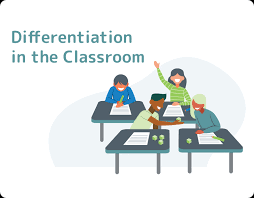The Impact of Classroom Differentiation on Your Business
In today’s competitive business landscape, it is crucial for companies to stay ahead of the curve and continuously improve their operations. One area that can have a significant impact on your business is classroom differentiation. By implementing effective differentiation strategies in your training and development programs, you can enhance employee performance, productivity, and overall business success.
What is Classroom Differentiation?
Classroom differentiation refers to the practice of tailoring instruction and learning experiences to meet the diverse needs of individuals or groups of learners. It recognizes that every employee has unique strengths, weaknesses, learning styles, and preferences. Instead of using a one-size-fits-all approach, classroom differentiation aims to provide customized learning opportunities that cater to individual differences.
By embracing classroom differentiation in your business, you can create a more inclusive and engaging learning environment. This approach allows employees to learn at their own pace, focus on their specific areas of improvement, and build upon their existing knowledge and skills.
The Benefits of Classroom Differentiation for Your Business
Implementing classroom differentiation strategies in your business can yield a wide range of benefits. Let’s explore some of the key advantages:
1. Enhanced Employee Engagement and Motivation
When employees feel that their learning needs are being met and that their unique contributions are valued, they are more likely to be engaged and motivated. Classroom differentiation encourages active participation, collaboration, and self-reflection, which can significantly enhance employee engagement and motivation levels.
2. Improved Knowledge Retention and Application
Traditional training methods often rely on a one-time delivery of information, which may not be effective for long-term knowledge retention. Classroom differentiation, on the other hand, allows employees to engage with the material in a way that suits their learning style and preferences. This personalized approach promotes deeper understanding and better retention of knowledge, leading to improved application of skills in the workplace.
3. Increased Employee Satisfaction and Loyalty
By investing in their professional growth and development through classroom differentiation, you demonstrate your commitment to your employees’ success. This can significantly impact employee satisfaction and loyalty. When employees feel valued and supported, they are more likely to stay with the company, reducing turnover and associated costs.
4. Enhanced Problem-Solving and Critical Thinking Skills
Classroom differentiation encourages employees to think critically, analyze information, and solve problems independently. By providing opportunities for employees to explore real-world scenarios and apply their knowledge in practical ways, you can foster the development of essential problem-solving and critical thinking skills. These skills are invaluable in today’s rapidly evolving business landscape.
5. Cultivation of a Learning Culture
By implementing classroom differentiation, you send a clear message to your employees that learning is a priority within your organization. This helps to cultivate a learning culture where continuous improvement and professional development are valued. A learning culture can drive innovation, adaptability, and agility, positioning your business for long-term success.
Strategies for Implementing Classroom Differentiation
Now that we understand the benefits of classroom differentiation, let’s explore some strategies for effectively implementing it in your business:
1. Assess Individual Learning Needs
Start by assessing the individual learning needs of your employees. This can be done through surveys, interviews, or informal discussions. Identify their strengths, weaknesses, preferred learning styles, and areas of interest. This information will serve as a foundation for designing personalized learning experiences.
2. Provide Flexible Learning Paths
Offer employees a variety of learning paths and options to choose from. This could include online courses, workshops, mentorship programs, or job rotations. By providing flexibility, employees can select the learning opportunities that align with their interests and career goals.
3. Use Varied Instructional Strategies
Utilize a range of instructional strategies to cater to different learning styles and preferences. This could include lectures, group discussions, case studies, simulations, or hands-on activities. Varying the instructional methods keeps employees engaged and enhances their overall learning experience.
4. Provide Ongoing Feedback and Support
Regularly provide feedback to employees on their progress and performance. This feedback should be constructive, specific, and actionable. Additionally, offer support and resources to help employees overcome challenges and enhance their learning outcomes.
5. Encourage Collaboration and Peer Learning
Promote collaboration and peer learning opportunities within your organization. Encourage employees to share their knowledge, skills, and experiences with one another. This not only fosters a sense of community but also allows for the exchange of ideas and perspectives.
Measuring the Impact of Classroom Differentiation
It is essential to measure the impact of classroom differentiation on your business to determine its effectiveness and make necessary adjustments. Here are some ways you can measure the impact:
1. Performance Evaluations
Include specific criteria related to the application of knowledge and skills acquired through classroom differentiation in your performance evaluation process. This allows you to assess the direct impact on employee performance and identify areas for improvement.
2. Employee Surveys
Conduct regular surveys to gather feedback from employees regarding their learning experiences and the impact it has had on their job performance. This feedback can provide valuable insights into the effectiveness of your classroom differentiation strategies.
3. Business Metrics
Monitor key business metrics such as productivity, customer satisfaction, and employee retention rates to identify any positive trends or improvements that can be attributed to classroom differentiation. These metrics can help you establish a correlation between employee development and overall business success.
4. Observations and Interviews
Observe employees in action and conduct interviews to gauge their level of engagement, application of knowledge, and overall satisfaction with the classroom differentiation approach. These qualitative insights can provide a deeper understanding of the impact on individual employees and the organization as a whole.
In Conclusion
Classroom differentiation can have a profound impact on your business by improving employee engagement, knowledge retention, problem-solving skills, and overall satisfaction. By implementing effective strategies and measuring the impact, you can create a learning culture that drives success and positions your business for long-term growth.
